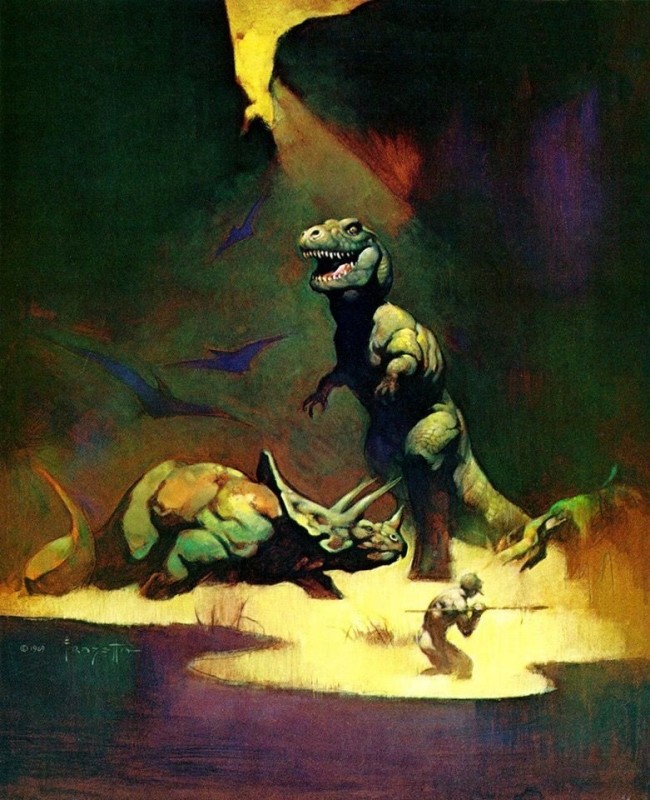- Old-School Essentials Sword & Sorcery West Marches campaign set in Kaendor, exploring the ancient ruins of the northern forests which have only recently begun to being settled by groups of people fleeing the reach of the sorcerer kings in the south.
- Iridium Moons: Coriolis homebrew Space Opera campaign about two merchant cartels fighting over who is going to have a monopoly on trade after the last large mining company pulls out of the sector, and their attempts to make the many small independent mines completely economically dependent on them.
- Shadows of the Sith Empire: A Star Wars d6 campaign set after the Dark Side ending of Knights of the Old Republic, in which a new Sith Empress controls a quarter of the Old Republic’s systems and is sending her agents out to search for lost ancient Sith texts that hold the secret of how Marka Ragnos and his predecessors managed to hold their empire together and how she might prevent her own apprentices from inevitably turning against her.
- The Outer Rim: A Star Wars d6 campaign set right after the destruction of the Death Star at the height of the Empire’s power. The party consists of former senatorial aides and guards and imperial officers who have fled to hide in the Outer Rim among the smugglers, scoundrels, and gamblers to escape the purges in the core worlds. Meanwhile the new Moff of Enarc has decided to establish order in the space between Sullust and Tatooine by putting an end to the fighting over spice smuggling between the Hutts and Black Sun. Imperial crackdowns and increased fighting between the two syndicates to be the one that gets to keep the region for itself only increases the chaos and raises sympathy for a rebellion against the empire.
- The Heart of Darkness: Dungeons & Dragons Planescape campaign that focuses on the rarely visited planes Beastlands, Ysgard, Pandemonium, Carceri, and Gehenna and revolving around an arcanaloth, a rogue asura with an army of Fated, the Revolutionary League, and the Doomguard trying to gain control over a terrible artifact of entropy.
- Murky Waters: A Mutant: Year Zero campaign set in the islands that are left of Denmark, Northern Germany, Northern Poland, and Southern Sweden after an 80m sea level rise. The mainland is completely uninhabitable by clouds of deadly fungus spores, but the salt of sea water keeps the fungus from taking hold on small islands in the stormy sea.
- Sankt Pauli bei Nacht: Vampire campaign set in Hamburg, with a brewing conflict between old Ventrue shipping magnates and Bruja activists over which neighborhoods are their rightful territory as gentrification changes the social environment. With Malkavians claiming the rowdy entertainment district in the harbor, and a gang of Nosferatu the subway systems. And going all the way back to the concepts of the first edition, it’s actually going to be personal horror.
Category: Kaendor
Return to Kaendor
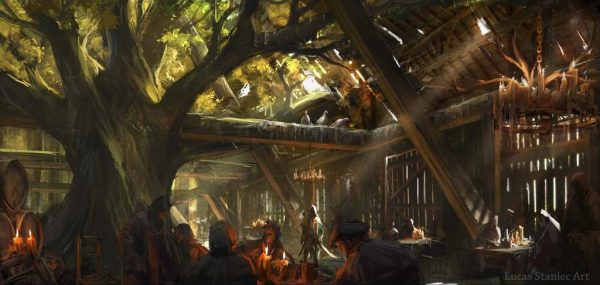 Y’all all don’t what real Gamer ADHD is!
Y’all all don’t what real Gamer ADHD is!
Yesterday I mentioned on Mastodon that I regular keep getting new ideas every few months for what could be really cool campaigns and then losing interest in the work after a few days or weeks, but that it seems like I always keep coming back to the same Sword & Sorcery inspired setting of nature spirits and dinosaurs on an alien forest planet. People asked if there’s any place where they could read more on that world, and there really isn’t anything I could direct people to at this moment. So this post is going to be that.
Kaendor is the current incarnation of a Sword & Sorcery style campaign setting heavily inspired by the worlds of Morrowind and Dark Sun, and the visuals of classic Star Wars and Conan the Barbarian, that I’ve been tinkering and experimenting with since at least back in 2009. I’ve run three separate campaigns in that world over the years, but there have been many drastic overhauls and changes to the geography, history, cultures, and monster populations that it’s become a completely different world from its original incarnation. But looking through my old material, the jumble of ideas and fragments seems to have gained the general shape of what is now the Kaendor setting in Summer 2016 when I wrote my Project Forest Moon concept. Reading it again now, it still feels like a perfect match for what I want to accomplish with the setting.
My previous campaigns were run playing Pathfinder, Astonishing Swordsmen & Sorcerers of Hyperborea, and while I wanted to run D&D Basic/Expert last time, there just wasn’t the audience for it and we ended up playing 5th edition. I had been very seriously considering Barbarians of Lemuria, Worlds Without Number, and Forbidden Lands as systems for future campaigns. But now with the considerable popularity gained by Old-School Essentials, which is reformated reprint of the B/X rules, I think it’s now much easier to get player for it. And it really is the system that Kaendor was always meant to be for.
Inspirations and References
- A Princess of Mars
- Albion (DOS game, 1995)
- Bound by Flame
- Conan the Barbarian
- Dark Sun
- Fire and Ice (by Bakshi and Frazetta)
- Kenshi (PC game, 2018)
- Morrowind
- Nausicaa
- Princess Mononoke
- Record of Lodoss War
- Return of the Jedi
- Severance: Blade of Darkness
- The Empire Strikes Back
- Warcraft III: The Frozen Throne
- X1: The Isle of Dread
- X6: Quagmire!
Yes, this is all very 80s/early 90s. That stuff is on fire! ;)
The Environment
Kaendor is the smaller of a pair of binary planets around an orange dwarf star, the other one being a a blue gas dwarf (a type of planet now known to be common in the universe, but with no example in our solar system). With the stars lower gravitational pull on the planets, a year is slightly longer at 381 days, but with another large planet in place of a moon, months are considerably shorter at only 16 days. (Leading to two 8-days weeks per months.) With the gas planet casting a much larger shadow than a smaller moon, solar eclipses are much more common on Kaendor, and many places see one or two every year, which are typical occasions for many magical rituals.
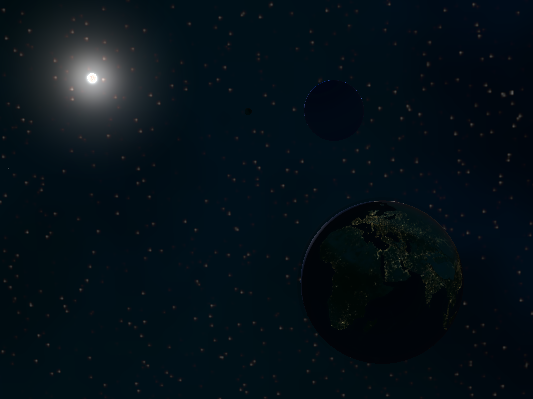
The surface of Kaendor is about half land and ocean, with almost all but the higher mountain ranges being covered in an endless expanse of trees, giant mushrooms, and swamps. The dominant animals on land are reptiles and insects, with many species growing to enormous sizes. Instead of birds, the skies are home to many kinds of feathered flying reptiles. Mammals are somewhat uncommon, mostly resembling rodents of many shapes and sizes, but there are also many types of deer and goats. (There are no dogs, cats, horses, or bears)
The Peoples
The common Kaendorians are very similar to humans in nature and appearance, but they don’t have any particular resemblance to any specific peoples from Earth. Giants, serpentmen, and fishmen exist, but their numbers are a far cry from what they were tens of thousands of years ago and most people never see even one of them in their entire lives. Insect-like goblins are more common, but they mostly keep to themselves and only occasionally make short visits to other settlements to trade.
Civilization on Kaendor is generally fairly small. While there are many large river valleys for civilizations to arise, there are few open plains, and clearing the ancient forests along the river banks is difficult and dangerous work with the massive scale of many old trees and the amounts of deadly animals and treacherous spirits. A few major cities exist near the coast, but mostly people live in small towns and surrounding villages scattered far and wide across the lands, in whatever small patches of farmable land can be found. The larger city states can establish some kind of centralized government over the surrounding towns and villages a few days’ ride out from their city walls, but most people are ruled over by local chiefs or tribal councils.
The technology level of Kaendor is mostly Bronze Age, with crudely made iron being only suitable for nails, cooking pots, arrowheads, and armor scales, but too fragile for weapons, tools, or chainmail. There are a few roads through the forests connecting the city states with nearby towns, but transportation of heavy goods is done almost entirely by boats over longer distances, or hauled by pack animals that can walk on narrow trails and step over roots or through mud. Wheels are only used for wheelbarrows or handcarts within towns and villages.
The Supernatural
This is an aspect of the setting that is still somewhat up in the air and I am currently undecided on how I want to nail down the specific rules for the future. In general term, all the natural forces in the environment are the actions of spirits. Most spirits of plants and stones are extremely simple beings that have no real consciousness, personality, or individual traits. They simply exist, maintaining the natural cycles of the environment through their passive influence. But the spirits of particularly ancient trees or large caves, and especially the spirits of whole forests, mountains, or island are very powerful entities that have a great awareness of everything that happens within their domains and the power to influence the environment directly to their will. However, the nature of these great spirits is completely different from that of mortals, and they perceive the world and understand events in drastically different terms. Their desires and choices lie well outside the comprehension of ordinary mortal minds and they generally have no concerns of any kind how their actions and changes to the environment affect individual people or even whole villages.
All settlements require a shaman who knows the local spirits and has at least a basic understanding of their goals and desires. The role of the shamans is to consult with the spirits to get permission to build new settlements or make any major changes to the environment and to plead with them for understanding about offenses or aid in times of hardship. They also perform the many rituals and sacrifices demanded by the spirits in return for their continued permission to settle, farm, hunt, and mine in their domains. The exact purpose of many rituals and what the spirits actually gain from them is a mystery even to many shamans, but they are not questioned as subservience to the spirits is an everyday part of life everywhere on Kaendor.
Magic that falls outside the domain of interactions with the spirits exists in the realm of sorcery and is closely tied to demons. Being part of the environment and regulating its natural processes, the power of the spirits is limited to guiding the many forces of nature, but it can not break its laws. It can control plants and the weather, accelerate healing or cause disease, or increase strength or cloud the minds of mortal creatures. Existing outside of nature and coming directly from the primordial chaos, demons are not bound to such limitations. Sorcery can do the impossible by rewriting the laws of nature and overturn the natural order, making it potentially extremely powerful. However, the natural world is extremely complex with everything influencing and affecting everything else, and seemingly minor changes that disrupt the natural order can have impossible to predict consequences with wide reaching scale. Sorcery is inherently corrupting, spreading decay and sickness in everything it touches. The effects of a single spell are typically very subtle, and over time the natural order will restore itself and the damage disappear. But the continuous use of demonic chaos magic has devastating effects on both sorcerers and the lairs in which they perform their spells and rituals. The transformation into ghouls is the first stage of the effects of continuous exposure to sorcerous spells or corrupted environment. At that point there is rarely any hope for victims of returning to their former selves, and the only paths ahead if the effects of sorcery persists are numerous forms of true undeath.
Search your feelings, you know it to be true
A Tale of the Past
Feeling particularly fed up with the D&D Fantasyland cliches, I found the motivation to resume work on Planet Kaendor and go full out with the Sword & Sorcery treatment. I once again had Kenshi and Conan Exiles on my mind, and now Forbidden Lands. (Also Morrowind, because I always do.) When I last ran out of steam, the setting seemed a bit bland and stale, but I think a new backstory could do wonders to give it the spark it needs without reworking the geography and culture in significant ways.
 Long in the distant past, the lands between the Sea in the West and the Mountains in the East was home to the northern civilization of the Rakshasa and the southern civilization of the Naga. Eventually the two rising powers came into conflict, which turned into centuries of warfare. As the wars dragged on, both sides unleashed incresingly devastating sorcery, turning the forests that made up the borderlands between the two powers were into a blasted wasteland. Even when armies managed to cross the burned plains to lay siege to the enemy’s cities, there was no way to possibly hold a city that was taken on the other side, and so the original plans for conquest gave way to a rage of blind destruction. As the desolation spread further into the two great woodlands and both sides exhausted their power, invasions became more difficult and less frequent, until eventually they simply stopped altogether, with nobody having any claim to victory.
Long in the distant past, the lands between the Sea in the West and the Mountains in the East was home to the northern civilization of the Rakshasa and the southern civilization of the Naga. Eventually the two rising powers came into conflict, which turned into centuries of warfare. As the wars dragged on, both sides unleashed incresingly devastating sorcery, turning the forests that made up the borderlands between the two powers were into a blasted wasteland. Even when armies managed to cross the burned plains to lay siege to the enemy’s cities, there was no way to possibly hold a city that was taken on the other side, and so the original plans for conquest gave way to a rage of blind destruction. As the desolation spread further into the two great woodlands and both sides exhausted their power, invasions became more difficult and less frequent, until eventually they simply stopped altogether, with nobody having any claim to victory.
Where the burned wastelands slowly recovered over time to turn into a great plain of grass and shrubland, the two battered civilizations did not. When the shared enemy from the outside faded into the distance, cities turned against each other, further reducing both realms into hollow husks of their former selves.
Eventually, human barbarians from the Mountains in the East came down into the depopulated plains. First to hunt the abundant grazing beasts, but then to settle the fertile banks of the great rivers. Three shaman kings managed to defeat the last rakshasa lord ruling in the plains and somehow gained immortality for themselves in the process. Each of them claimed one of the former rakshasa cities for themselves as conquerors, though two of the cities had already been abandoned long ago at that point.
While human civilization grew in the plains, they always stayed clear of the great ancient woodlands to the North and the South, as the Rakshasa and Naga that continued to live beneath the trees were still terrible foes to face. But over the last generations, hunters and explorers have dared venturing deeper and deeper into the northern woodlands, and rumors spread that the Rakshasa seem to be gone. Many have doubts that these ancient beings have truly disappeared for good, but to many people in the western plains, possibility of a life beyond the reach of the sorcerer kings is very much worth such a risk. The northern woodlands are not just calling to those who wish to escape the grasp of the sorcerer kings. Abandoned rakshasa castles and towers promise powerful magical artifacts that might have been left behind and forgotten, and whose value could be beyond measure.
Ghouls
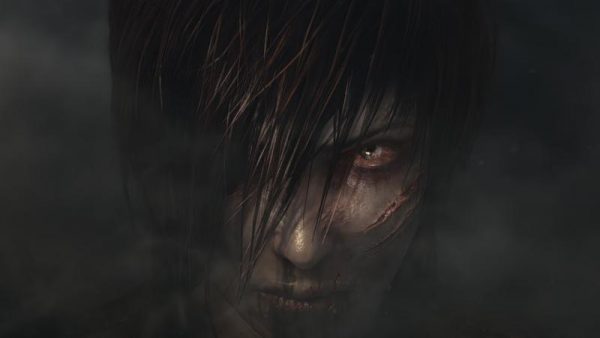 The undead are creatures who were once alive, have died, and then brought back as something else under the influence of sorcerous corruption and demonic possession. While often regarded among them by most people, ghouls are not actually undead, since even though they have become warped by the corrupting influence of sorcerous energies, they never died and in many ways continue to be what they were in life.
The undead are creatures who were once alive, have died, and then brought back as something else under the influence of sorcerous corruption and demonic possession. While often regarded among them by most people, ghouls are not actually undead, since even though they have become warped by the corrupting influence of sorcerous energies, they never died and in many ways continue to be what they were in life.
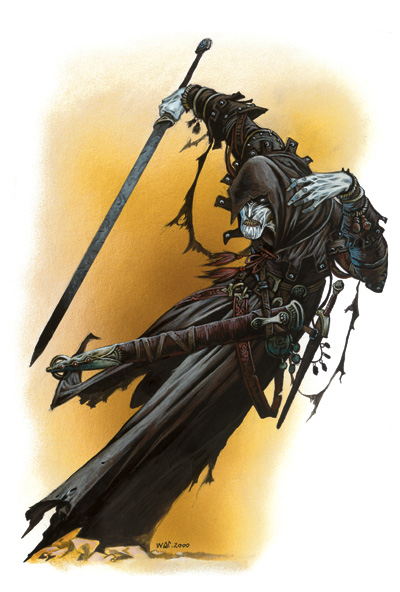 Ghouls are people who have been exposed to strong sorcerous energies for long durations of time. Many ghouls are the servants of powerful sorcerers or demon-possessed anathema who assisted their masters in numerous demonic rituals or haved served in their inner sanctums for many years. Others are the survivors of great sorcerous attacks or disasters that permanently poisoned their devastated towns and the surrounding land. But there are also stories of foolish explorers who got lost in the Underworld, turning into ghouls in a matter or weeks or even days as they wandered too close to demonic lairs or the remains of slain demons. But usually the transformation into ghouls is a slow and gradual one. Typically the skin becomer paler and turning grey, hair becoming thin and stringy, and eyes turning all black. Eventually their hands become claws and their teeth fangs, alongside a growing instinct to tear and bite at those who provoke their easily irritated anger. An instinct that eventually grows to start feeding on the flesh of the slain. Another side effect of people who are turning into ghouls is that they stop to age and recover even from the most grievous wounds. It is nearly unheard of for a ghoul to escape from a fight and later die from sustained injury. Often, this is the first hard proof that a person has not just been corrupted by the effects of sorcerey but turned into an actual ghoul.
Ghouls are people who have been exposed to strong sorcerous energies for long durations of time. Many ghouls are the servants of powerful sorcerers or demon-possessed anathema who assisted their masters in numerous demonic rituals or haved served in their inner sanctums for many years. Others are the survivors of great sorcerous attacks or disasters that permanently poisoned their devastated towns and the surrounding land. But there are also stories of foolish explorers who got lost in the Underworld, turning into ghouls in a matter or weeks or even days as they wandered too close to demonic lairs or the remains of slain demons. But usually the transformation into ghouls is a slow and gradual one. Typically the skin becomer paler and turning grey, hair becoming thin and stringy, and eyes turning all black. Eventually their hands become claws and their teeth fangs, alongside a growing instinct to tear and bite at those who provoke their easily irritated anger. An instinct that eventually grows to start feeding on the flesh of the slain. Another side effect of people who are turning into ghouls is that they stop to age and recover even from the most grievous wounds. It is nearly unheard of for a ghoul to escape from a fight and later die from sustained injury. Often, this is the first hard proof that a person has not just been corrupted by the effects of sorcerey but turned into an actual ghoul.
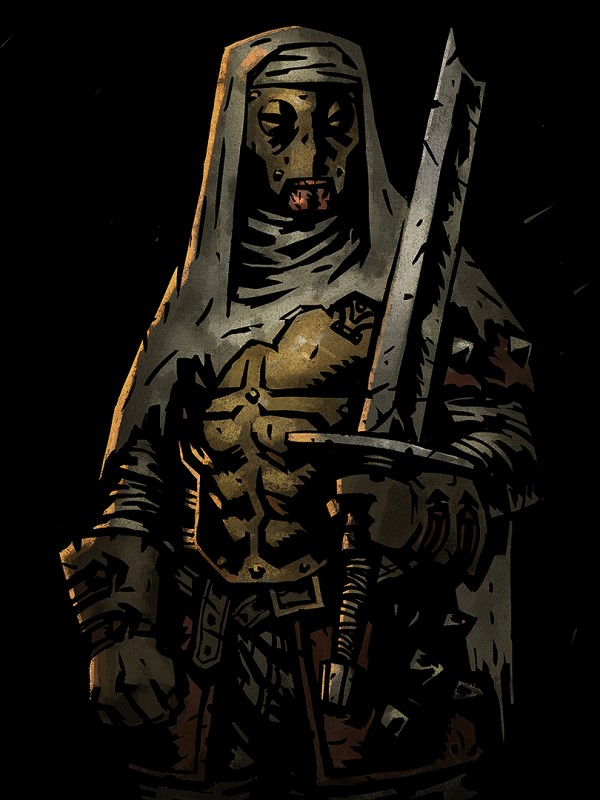 Unlike what many people believe, the corruption into a ghoul does not turn a person into a mindless beast that hunts the living. This descent into savagery and madness is primarily caused by the continuing exposure to demonic corruption. The transformation into ghouls can not be reversed (though there are legends of magical springs that might have such a power), but ghouls that have managed to escape the dark places that corrupted them are often able to retain their intelligence and most of their sanity if they are able to maintain the discipline to control their bestial urges. Ghouls found in the ruins of destroyed cities or the crumbling towers of long dead sorcerers are rarely much more than wild beast that quickly attack any potential prey they think they can take down. But ghouls who are wandering the lands might be quite difficult to spot as such without taking a close up look at their faces. Traveling ghouls usually wrap themselves in cloaks and hoods, or wear masks to conceal their distorted features.
Unlike what many people believe, the corruption into a ghoul does not turn a person into a mindless beast that hunts the living. This descent into savagery and madness is primarily caused by the continuing exposure to demonic corruption. The transformation into ghouls can not be reversed (though there are legends of magical springs that might have such a power), but ghouls that have managed to escape the dark places that corrupted them are often able to retain their intelligence and most of their sanity if they are able to maintain the discipline to control their bestial urges. Ghouls found in the ruins of destroyed cities or the crumbling towers of long dead sorcerers are rarely much more than wild beast that quickly attack any potential prey they think they can take down. But ghouls who are wandering the lands might be quite difficult to spot as such without taking a close up look at their faces. Traveling ghouls usually wrap themselves in cloaks and hoods, or wear masks to conceal their distorted features.
Ghoul
| Armour Class | 13 |
| Hit Dice | 2* (3-15 hp) |
| Attacks | 3 claws and bites +1 (1d3 + paralysis) or Weapon +1 (1d6+1) |
| Movement | 40’ |
| Saving Throws | D12, W13, P14, B15, S16 (2) |
| Morale | 9 |
| XP | 25 |
| Number Appearing | 1d6 (2d8) |
Infravision: 90′.
Paralysis: For 2d4 turns (save versus paralysis). Creatures larger than giants are unaffected. After paralyzing a target, ghouls will attack others.
Undead: Immune to effects that affect living creatures (e.g. poison). Immune to mind-affecting or mind-reading spells (e.g. charm, hold, sleep).
Goblins
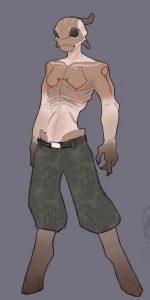 Goblins are one of the many peoples populating the lands of Kaendor but they are barely seen in the cities and towns of Senkand, making their homes well beyond the edges of civilization. A large number of goblin villages exists west of the mountains in the forests of Dainiva, particularly in the caves of the lower mountain slopes and foothills, but they can also be found further west in places where the dense forest blocks out most of the sun, all the way up to the great river cutting the vast woodlands into two halves. Other settlements are located beneath the rocky highlands of the Yao, and they are also said to live in the far northen lands of Venlat.
Goblins are one of the many peoples populating the lands of Kaendor but they are barely seen in the cities and towns of Senkand, making their homes well beyond the edges of civilization. A large number of goblin villages exists west of the mountains in the forests of Dainiva, particularly in the caves of the lower mountain slopes and foothills, but they can also be found further west in places where the dense forest blocks out most of the sun, all the way up to the great river cutting the vast woodlands into two halves. Other settlements are located beneath the rocky highlands of the Yao, and they are also said to live in the far northen lands of Venlat.
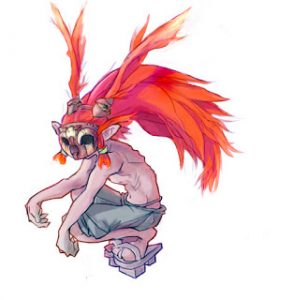 Goblins are humanoid creatures of short stature, usually standing around four foot tall but occasionally reaching up to five feet in height. They have tough hides ranging from a dusty brown to grey that helps them blending in with rocky environments as they oftn wear nothing more than loose trousers and perhaps a simple shirt in similar natural colors. While goblins have faces similar to other humanoid peoples with small noses and big black eyes, most people regard them as rather expressionless and blank. Goblins that could be considered chatty are rarely encountered, giving them a reputation for being somewhat dull, but they are no less smart than other peoples. Many Yao who have had dealings with goblins describe them as refreshingly composed and unobstrusive.
Goblins are humanoid creatures of short stature, usually standing around four foot tall but occasionally reaching up to five feet in height. They have tough hides ranging from a dusty brown to grey that helps them blending in with rocky environments as they oftn wear nothing more than loose trousers and perhaps a simple shirt in similar natural colors. While goblins have faces similar to other humanoid peoples with small noses and big black eyes, most people regard them as rather expressionless and blank. Goblins that could be considered chatty are rarely encountered, giving them a reputation for being somewhat dull, but they are no less smart than other peoples. Many Yao who have had dealings with goblins describe them as refreshingly composed and unobstrusive.
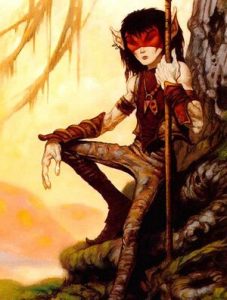 While goblins frequently come outside to the surface, they mostly do so during the evenings and at night and prefer to stick to densely forested areas as their true home is found underground. Not only are they well adapted to living in caves, they also follow ancient customs of adapting underground spaces to their own needs. As they don’t make any metal tools of their own, and bronze blades and chissels from the surface are limited, their masonry and sculpting looks very primitive to the stonework of asura and naga and even the cities of Senkand, but their constructions are often much more sophisticated than their rough looks seem to imply.
While goblins frequently come outside to the surface, they mostly do so during the evenings and at night and prefer to stick to densely forested areas as their true home is found underground. Not only are they well adapted to living in caves, they also follow ancient customs of adapting underground spaces to their own needs. As they don’t make any metal tools of their own, and bronze blades and chissels from the surface are limited, their masonry and sculpting looks very primitive to the stonework of asura and naga and even the cities of Senkand, but their constructions are often much more sophisticated than their rough looks seem to imply.
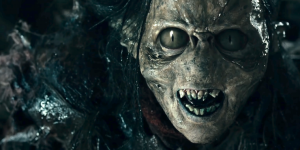 Being fully at home in caves, goblins are incredible rock climbers, and their small and thin statures allow them to move through very tight spaces with relative ease. Many caves in Kaendor, particularly below the great mountain ranges, go incredibly deep, with many of them reaching all the way down into the Underworld. While being an incredibly dangerous environment to most peoples other than goblins, the goblins themselves make frequent journeys into the greatest depths of the Earth and are familiar with many of the main passages. Explorers trying to reach caverns and ruins deep underground without goblin guides face little chance of success, or returning.
Being fully at home in caves, goblins are incredible rock climbers, and their small and thin statures allow them to move through very tight spaces with relative ease. Many caves in Kaendor, particularly below the great mountain ranges, go incredibly deep, with many of them reaching all the way down into the Underworld. While being an incredibly dangerous environment to most peoples other than goblins, the goblins themselves make frequent journeys into the greatest depths of the Earth and are familiar with many of the main passages. Explorers trying to reach caverns and ruins deep underground without goblin guides face little chance of success, or returning.
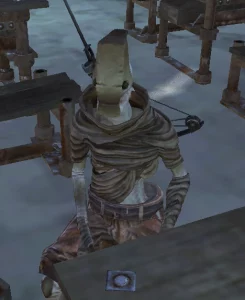 In the woodlands of Dainiva, goblins are the only people truly native to the land. The more northern reaches of the forest close to the mountains have become home to a number of Fenhail villages, but these have only appeared in the recent centuries, after the First Sorcerers were already gone. The goblins of the forest have called Dainiva their home for much longer than that, even during the time of the Asura Lords. They still possess much ancient knowledge about parts of the woodlands that no Fenhail has ever set eyes on. While few goblin villages are exactly welcoming of visitors, few are openly hostile or ambush strangers found passing through their territory. They are most likely to stay out of sight amd wait for intruders to be on their way, but some are more open to talk, even if rarely enthusiastic. Many goblin villages are very interested in bronze blades and tool, though they rarely have much to trade other than food and leather. As one is moving deeper into the forests and away from the mountains, things are further complicated by very few goblins speaking any languages other than their own.
In the woodlands of Dainiva, goblins are the only people truly native to the land. The more northern reaches of the forest close to the mountains have become home to a number of Fenhail villages, but these have only appeared in the recent centuries, after the First Sorcerers were already gone. The goblins of the forest have called Dainiva their home for much longer than that, even during the time of the Asura Lords. They still possess much ancient knowledge about parts of the woodlands that no Fenhail has ever set eyes on. While few goblin villages are exactly welcoming of visitors, few are openly hostile or ambush strangers found passing through their territory. They are most likely to stay out of sight amd wait for intruders to be on their way, but some are more open to talk, even if rarely enthusiastic. Many goblin villages are very interested in bronze blades and tool, though they rarely have much to trade other than food and leather. As one is moving deeper into the forests and away from the mountains, things are further complicated by very few goblins speaking any languages other than their own.
Goblin
| Armour Class | 13 |
| Hit Dice | 1-1 (1-7 hp) |
| Attacks | Weapon +0 (1d6) |
| Movement | 30’ |
| Saving Throws | D14 W15 P16 B17 S18 (0) |
| Morale | 7 |
| XP | 5 |
| Number Appearing | 2d4 (6d10) |
Infravision: 90′.
Hate the sun: –1 to-hit in full daylight.
Goblin king and bodyguards: A 3HD king and 2d6 2HD bodyguards live in the goblin lair. The king gains a +1 bonus to damage.
Surprise: Goblins surprise characters on a 3 in 6 chance in caves and rocky surroundings.

